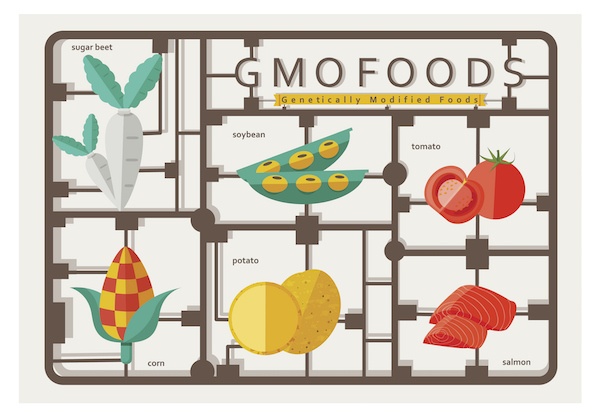
GMO foods are another modern development that have taken over Big Agriculture and are harmful to the health of the gut.
I am sure all of you are familiar with the weed killer Roundup, but did you know that’s where the GMO story starts?
The herbicide Roundup was developed in 1974 by Monsanto, a giant agriculture biotech company based in St. Louis, Missouri. Roundup, a powerful weed killer, contains glyphosate, a potent and toxic herbicide. Numerous studies on the link between glyphosate and cancer concluded that glyphosate is “probably carcinogenic”.
Then the Roundup story takes at twist. Back in the 80’s and early 90’s, Monsanto scientists were working on developing crops that would have a specific immunity or resistance to Roundup. Monsanto however didn’t want to sell less Roundup, but if the research-and-development scientists could develop crops that were resistant to Roundup, then their herbicide could be more freely used in their fields because the cash crops would be left alone.
That’s how the first GMO crops came to be. By taking genes from one organism, usually a nutated virus, and inserting them into the DNA of the crops, Monsanto scientists produced crops that were higher, larger, denser, and more resistant to Roundup.
In 1996, Monsanto introduced its first Roundup Ready crop, soybeans, followed by corn in 1998. After that, these Roundup Ready/GMO crops spread like wildfire. In just 20 years, 94 percent of soybeans and 89 percent of corn grown on U.S. farmlands came from Roundup ready/GMO crops. Since the late 90’s, more crops have been genetically modified – cotton, sugar beets, and canola – and have been widely adopted. Now new “super-weeds” are filling farm fields, leading to lower crop yields and even more toxic herbicides used to combat the Roundup-resistant weeds.
In 2013, researchers from MIT published a study in the journal of Interdisciplinary Toxicology declaring glyphosate the “most important causal factor in the celiac disease epidemic,” citing more than 270 studies examining how the pesticide could be linked to the fourfold increase in celiac disease, as well as numerous other autoimmune conditions, over the past few decades.
And yet, Roundup remains.
Four-fifth of the foods that most Americans eat are likely from GMO crops, fruits and vegetables grown in nutrient-depleted soils doused with pesticides. Seeing that rates of leaky gut are sky-high from one end of the country to another, what should you do?
Genetically modified (GMO) foods were first commercialized in the US in the early 1990s. The US Food and Drug Administration (FDA) allowed GMO foods onto world markets in spite of its own scientists’ warnings that genetic engineering is different from conventional breeding and poses special risks, including the production of new toxins or allergens that are difficult to detect.
Feeding studies on laboratory animals and farm livestock have found that some GMO crops, including those already commercialized, have toxic or allergenic effects.
